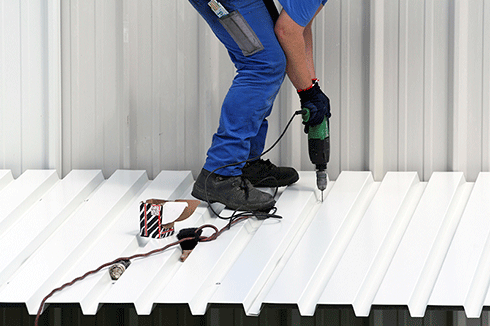
|
Published: 22 December 2014
Looking for a summer hols project? Paint your roof lighter
Researchers from the University of South Australia (UniSA) say that painting or choosing a roof with a light colour over a dark one will decrease annual household energy costs for heating and cooling by 4–8 per cent.
Dr John Pockett from UniSA’s Barbara Hardy Institute suggests the Christmas holidays present a good opportunity for Australians to adapt their houses to climate change with some simple home improvements.
‘One thing all home owners can do is to have a lighter coloured roof, known as a cool roof,’ Dr Pockett says.
‘Paint the roof as light coloured as your council area will allow. A cool roof reflects sunlight (including ultraviolet and infrared rays) ensuring the surface will not get as hot during the summer. That leads to less heat entering living spaces. It essentially bounces the heat off of your roof.
‘In mainland state capitals across Australia, installing a cool roof to combat the summer heat can significantly decrease your total annual electricity bill.
‘With quality reflective paint technology designed to repel dust and dirt, this is a low maintenance roof solution.
‘Cool roofs also have bigger implications on electricity infrastructure expenditure – a big consideration for state governments trying to save money while planning for future electricity needs.’
According to Dr Pockett, electricity costs in SA typically comprise 25 per cent of total cost for generation, 50 per cent for infrastructure, and 25 per cent for retail costs.
He says nearly half of the state’s generation costs are caused by the need for infrastructure to deal with peak demand over roughly 23 hours per year.
‘What it means is that whether you buy a $2000 split air conditioning system or $7000 ducted air conditioning system, it will cost everyone another estimated $7000 over the lifetime of the unit in added generating and infrastructure costs,’ Dr Pockett says.
‘Infrastructure has to be put in to cope with those few hours per year – it’s like a superhighway for just 23 hours a year but you have to pay for the superhighway all year round. You have to fund the required massive capital investment for 30 years.
‘Our research has found the peak load is always better, right across Australia, with a lighter-coloured roof.’
Dr Pockett says switching to a cool roof has a number of benefits to the wider community as well.
‘Cool roofs also lead to lower carbon dioxide emissions, reductions in the peak electrical load, and help minimise the effects of urban heat islands – where the colour of the roof heats up the air, increasing the ambient temperature by a degree or two, which causes air conditioners to work even harder,’ he says.
Source: UniSA




